In today’s digital age, having a website is just the first step. What truly matters is implementing a solid Website Optimization Strategy to ensure your clients can find you online. It’s like having a beautiful store in a hidden alley (location location location); no matter how great your products or services are, they won’t matter if potential customers can’t find their way to your door. If your website isn’t delivering the results your business deserves, it’s high time to explore optimization. Your specific needs may range from minor adjustments to a complete overhaul, but rest assured, we are here to assist you every step of the way.
In this blog post, we’re going to take you through the essential steps to optimize your website so that your clients can actually find you. From keyword research to on-page optimization, we’ll break down the process into simple, actionable steps that anyone can follow. So, if you’re ready to boost your online visibility and attract more clients, let’s dive into the world of SEO!
**Download our Free Content Optimization Checklist here.
Site Optimization Tips
SEO or search engine optimization can be broken down into three main categories:
- On-page SEO
- Off-page SEO
- Technical SEO
To simplify the process, we have broken down the essentials of a good SEO strategy into 9 tips that are applicable to most of the service-based business websites.
- Page Loading Speed <h3>
In today’s fast-paced digital world, speed is the name of the game. When your website takes an eternity to load, your potential customers might lose patience and exit before your site even fully materializes, leaving behind a frustrated user experience. Essentially, if your website is sluggish, you’re leaving money on the table.
So, how can you improve your website speed? The first step is diagnosing the issue and pinpointing what’s slowing down your site speed. The following website optimization tools can help you identify the cause of poor page speed.
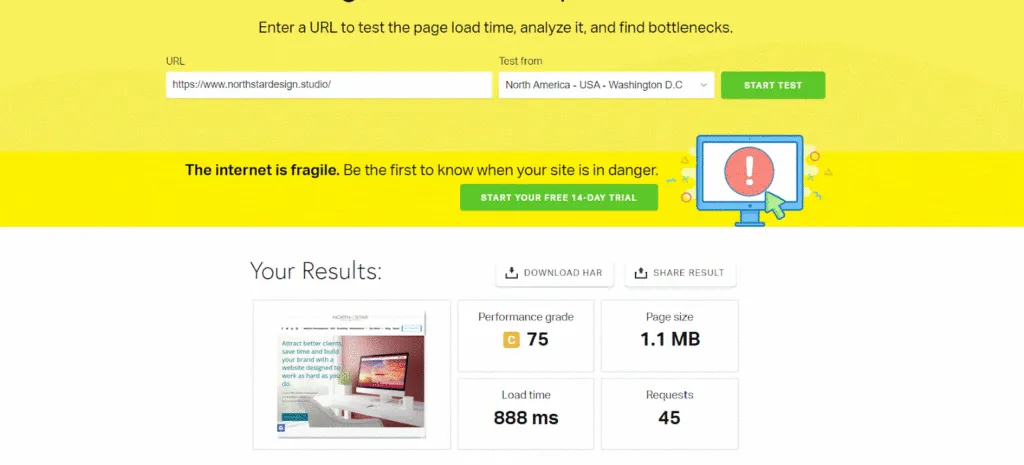
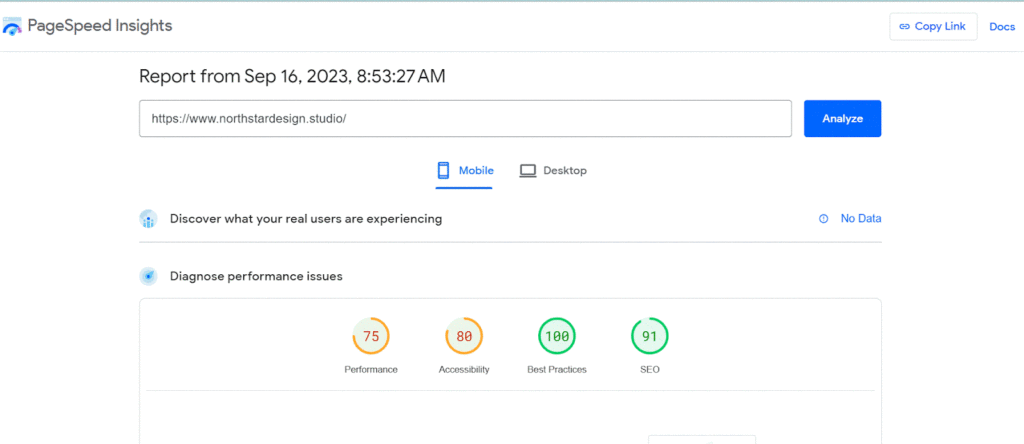
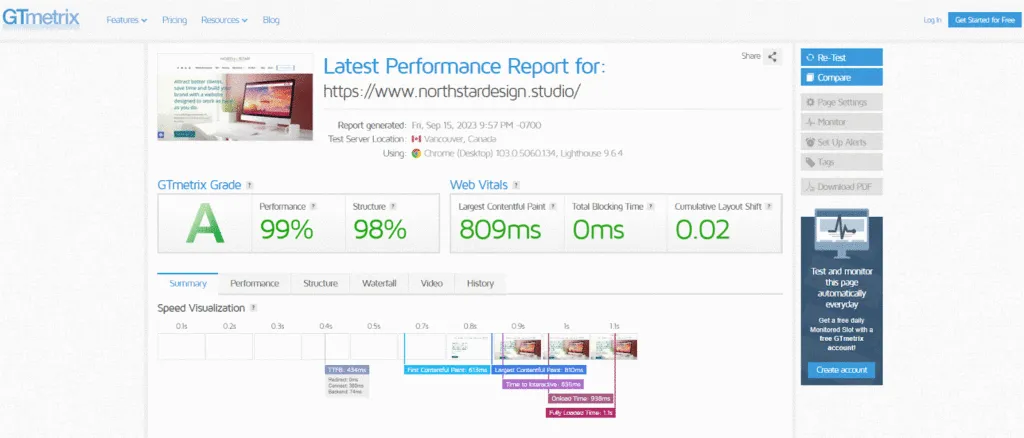
These services will run tests and provide you with precise insights into what’s dragging your site’s speed down. If you’re not using WordPress or a plugin isn’t the right fit, your best bet is to hire an expert web designer like NSDS. We can fine-tune your core web vitals for optimal website performance, ensuring you don’t lose those precious visitors in the loading abyss. Check out our speed optimization services. Don’t let a slow website hinder your success’ speed it up and keep those potential customers engaged!
- Make Your Site Mobile-Friendly
In today’s digital age, mobile devices have taken the throne when it comes to web browsing. With mobile web traffic surpassing desktop usage, it’s not just a trend; it’s a definitive shift in user behavior.
Why does this matter for your website? Well, let’s put it this way: if your site isn’t mobile-friendly, you might be alienating a significant chunk of your audience. In essence, making your website mobile-friendly isn’t just a nice-to-have; it’s a strategic move that can significantly impact your online success.
It ensures that your site is accessible and appealing to the growing mobile user base, giving you an edge in terms of user engagement, search engine rankings, and overall digital presence. So, if you haven’t already, it’s time to prioritize mobile-friendly design for your website.
- Keyword Research
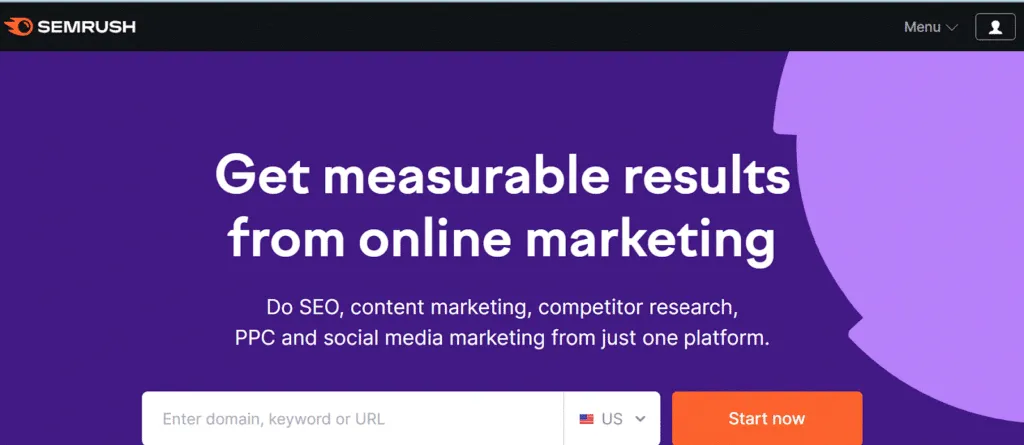
Starting your content optimization journey can be much like setting out on an adventure, it begins with mapping out the terrain. And that’s precisely what keyword research is all about. You need to find the right keywords for your landing pages as well as for your blog content.
At North Star Design Studio, we use a suite of top-notch, industry-leading tools, including SemRush, Google Keyword Planner, and Ahrefs, to conduct our keyword investigations. You can also use a free SEO tool like Google Keyword Planner. But what do we look for? Here’s our step-by-step procedure to do it.
- Competitors’ Research
First on our checklist is understanding the playing field by peeping into our competitors’ game plans. We scrutinize their web pages, identifying which keywords they’re using and how they’re drawing traffic. The idea isn’t to mimic them but to find those sweet spots – keywords that have a significant search volume, manageable competition, and, most importantly, can drive potential clients to our site.
- Finalizing a List of Relevant Keywords
The real fun begins when we unearth the hidden gems: keywords yet to be explored by competitors but brimming with potential. For every service page, we pinpoint a primary keyword, the guiding star for our content strategy.
- Clients’ Buy In
But here’s the icing on the cake: we believe in collaboration. After our deep dive, we circle back to you, our esteemed client. We present our findings and together select that main keyword and its supporting cast, ensuring our strategies align seamlessly with your vision. Once you approve the list of keywords, we head over to the content-writing phase.
4. Optimize Your Content For Search Engines and Human Beings
When it comes to optimizing your service page content, striking the right balance between catering to human readers and appeasing search engines is crucial. It’s not an either-or situation; it’s about harmoniously blending the art of communication with the science of search.
Further Reading: Website Copywriting 101: A Practical Guide To Writing Compelling Copy
At NSDS, we believe that collaboration with our clients is key to producing content that meets their goals. During our consultation, we aim to gain a deep understanding of your business, your audience, and your objectives. To do this, we ask the following questions:
- Who is your target audience? Knowing your audience helps us tailor our content to their needs and interests.
- What is your unique selling proposition (USP)? Understanding what sets your business apart allows us to highlight these strengths in your content.
- What are your short-term and long-term goals? Whether you’re aiming to increase website traffic, generate leads, or boost sales, we align our content strategy with your objectives.
- What tone and style do you prefer? We want your content to reflect your brand’s personality, so we inquire about your preferred writing style and tone.
- Do you have any specific keywords or topics in mind? Your input on keywords or topics you’d like us to focus on is invaluable.
- Are there any competitors you admire or want to emulate? Learning about your competition helps us tailor our approach to outshine them.
By gathering this information, we lay the groundwork for content that not only meets but exceeds your expectations. It allows us to create a content strategy that aligns perfectly with your business objectives and resonates with your target audience.
Producing good content is not enough. It is equally important to optimize your website content for higher search engine rankings. The following web optimization strategies can help in ranking your content higher.
- Content optimization- At NSDS, we use a top-notch optimization tool like Surfer SEO to write high-quality SEO content.
- Optimize title and description tags with the right keywords.
- Create the right hierarchy with heading tags (h1, h2, h3, etc.)
- Include both internal and external links
- Optimize URLs with the right keyword. It is important to keep the URL simple, e.g., yourdomain.com/main-keyword
5. Write Blog Content
When it comes to optimizing your website and boosting your SEO efforts, there’s a technique that accomplishes both goals while also captivating your audience: long-form content. As the name suggests, long-form content goes beyond the surface, offering an immersive exploration of a specific topic.
Long-form content isn’t designed for quick skims; it’s a captivating read that delves into the subject matter. Crafting quality long-form content demands research, critical thinking, and a commitment to providing substantial value to your audience.
Now, you might be wondering, “How long is long enough?” While it can vary depending on your niche and audience, a solid benchmark often hovers around the 2,000-word mark. You can incorporate visuals like images, infographics, and even videos to enhance engagement. Besides writing engaging content, you should optimize it with one main keyword and a cluster of supporting keywords.
Further Reading: Duplicate Content and Plagiarism: What it Means for Your Website
Search engines adore long-form content. They interpret the extensive word count as an indicator of high-value content, which often leads to improved rankings in search results. So, if you’re looking to not only capture your audience’s attention but also climb the SEO ladder, long-form content is a winning strategy. It’s the perfect blend of informative, engaging, and search engine-friendly content that propels your website to new heights.

6. Update Old Content
Do you have a bunch of content on your website that’s been there for a while, like two or more years? Well, it’s time to think about whether this older stuff is still helping your business as much as it could. One way to find out is through Google Search Console. Look for pages that are not getting enough clicks. Make a list of those pages and start improving them first.
You need to design a content optimization strategy that focuses on improving the existing content while adding more high-quality content. Some of the ways in which you can improve your existing content are:
- Add relevant and fresh information.
- Add images, videos, and infographics.
- Replace huge paragraphs of text with bullets and numbered lists.
- Remove the sections which are irrelevant to your audience.
At NSDS, we constantly recycle our content to make it fresh and relevant. Search engines like it when you update your content, so don’t forget to give some attention to your old stuff from time to time!
7. Optimize Your Images
Who can resist the allure of a vibrant graphic or an image that tells a story at a glance? If you create such visuals for your website, ensuring they’re optimized is a smart move. Here are a few simple things to consider:
- Size and Format: Opt for an image size and file type that suit your audience best. An image that’s too large can slow down your webpage. Also, make sure the file type is compatible; otherwise, the image might not load at all.
- Accessibility: Always add descriptive alt text for each image. This not only makes your website more accessible for those using screen readers but also provides an opportunity to include relevant keywords. Avoid putting crucial text inside images unless there’s an alternative way to access that information.
- Placement: Give your images context by positioning them alongside relevant text. If possible, try to showcase your key image near the top of the page to grab attention right away.
- Testing: Never forget to test your pages on both mobile and desktop. Google Images is a frequent hunting ground for users on mobile devices, so optimizing your images for mobile could offer added advantages.
Taking these steps to optimize your graphics ensures that your website not only looks visually appealing but also performs optimally, providing a great user experience across various devices.
Explore Speed Optimization Services
8. Optimize CTAs
Picture this: Your website is attracting a decent flow of visitors, but the conversion rate is lagging. It might be tempting to pump more resources into driving additional traffic, like running ads, but before you do, it’s wise to pause and diagnose why your website isn’t converting as expected.
For many service-based businesses, like mine, the pivotal point in the customer journey is a sales call. Therefore, the primary mission of your website should be to convert visitors into leads by enticing them to book calls.
To determine your current conversion rate, divide the average monthly calls booked through your website by the average number of monthly visitors (Google Analytics is your go-to tool for this). If you’re assessing sales or subscriber conversion rates, the same formula applies. While industry averages vary, a typical conversion rate hovers around 3%. Highly optimized landing pages can even hit a remarkable 10%. If you find yourself below 3%, there’s certainly room for enhancement.
One effective method to boost these rates is by strategically incorporating CTAs throughout your site. A CTA serves as an open invitation for visitors to take the next step on your page. In our case, the primary CTA revolves around booking a call. Ensure that every page on your website boasts at least one compelling CTA. This practice is particularly crucial for sales pages, landing pages, your homepage, and any pages that currently attract the bulk of your website’s traffic.
9. Generate Backlinks
When another website links to yours within an article or blog post, it is called backlink. Backlinks not only boost your domain authority but also increase the likelihood of drawing clicks to your site. One of the best ways to get backlinks organically is to write compelling content. The better your content aligns with users’ search intent, and the more exceptional your work, the greater the chance that others within your industry will reference your site. This process is widely recognized as link-building.
Some other ways of generating backlinks for your website include:
- Guest Blogging: Contribute your expertise to other platforms, showcasing your knowledge and gaining valuable backlinks.
- Testimonials: Provide authentic testimonials for products or services you’ve genuinely found valuable, often rewarded with a link back to your website.
- Answering Questions: Share your insights on platforms like Quora, establishing your authority and potentially receiving links as a result.
- Creating Shareable Content: If you create engaging videos, infographics, and other shareable content, you will naturally attract backlinks as they spread across the web.
- Leveraging Industry Contacts: Utilize your professional network, including platforms like LinkedIn, to connect with industry peers and share your expertise.
By exploring these diverse approaches, you can improve your website’s backlink profile, enhance your SEO performance, and expand your digital footprint in a dynamic online landscape.
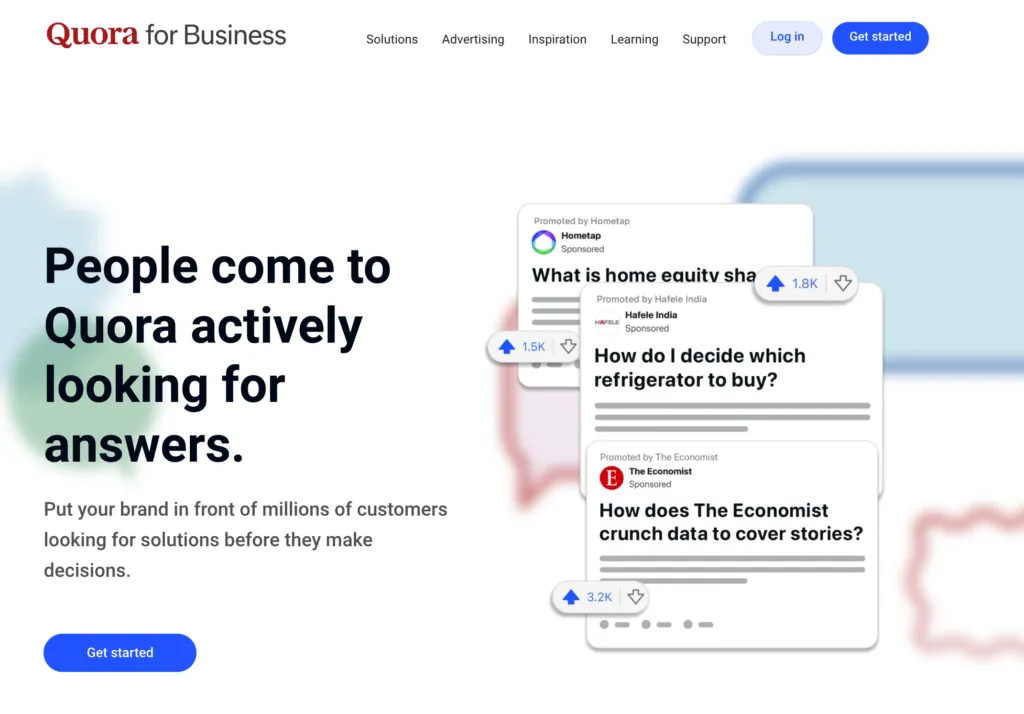
Ex: How Quora Can Generate Backlinks
- Answer Questions Authentically: Find questions related to web development, SEO, or any topic that’s in your wheelhouse. Provide genuinely useful, in-depth answers. The goal is to offer value, not just drop a link.
- Natural Link Placement: Within your answers, you’ll occasionally find natural opportunities to link back to relevant content on your site. Make sure this adds value to the answer and isn’t just a blatant self-promotion.
- Build Authority: As people upvote and share your answers, your profile gains visibility. This can make your backlinks more valuable, as they’re coming from a “trusted” source.
Why It’s Effective
- Targeted Traffic: People asking questions related to your field are already interested in the subject. That makes them potential high-quality leads.
- SEO Benefits: Links from Quora are nofollow links, which means they don’t pass PageRank directly. However, there’s a debate on how much weight Google gives to nofollow links. Some SEO experts believe they still offer some SEO benefits like improving your site’s trustworthiness and authority.
- Branding: Being active on Quora can help position you or your company as an expert in your field.
Caveats
- Time-Consuming: Providing high-quality answers that warrant upvotes and shares can take time.
- No Immediate ROI: You won’t see immediate SEO benefits because Quora uses nofollow links, so it’s a long-term strategy.
To back this up with some stats, Neil Patel (a reputable figure in digital marketing) suggests that Quora is a great channel for driving high-quality traffic. According to a study by SimilarWeb, Quora was the second-largest source of referral traffic to publishers next to Twitter as of 2018.
Further Reading: Is Backlinking Dead? Importance of Backlinks for Service-Based Businesses
Website Optimization Wrap-up
In conclusion, optimizing your website isn’t a daunting quest reserved for tech-savvy wizards; it’s a series of strategic steps that, when executed with precision, can propel your digital presence to new heights. We at NSDS are here to accompany you every step of the way on this journey. Your website is your digital storefront, and we’re committed to ensuring it shines brilliantly, drawing clients to your door. If you’re ready to elevate your online visibility and attract more clients, book a call today. Get started here.





